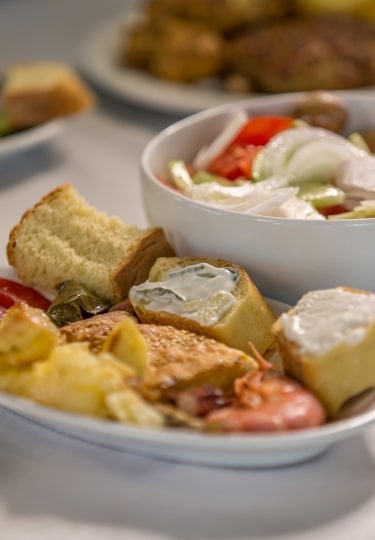Athens, the cradle of civilization, boasts an incredible foodie scene ranging from high-end restaurants to the simplest of street food.
Sitting at the crossroads of Europe, Asia and North Africa, Greek cuisine has influences from all three as well as its own foods that carry the Protected Designation of Origin stamp. Feta cheese, pistachio nuts from the island of Aegina, vanilla pine honey from the Peloponnese, and Kalamata olives are among more than 100 types of food that can only be produced in Greece.
It’s little wonder then that dining out here is a national pastime. Quick bites and fast food abound, but neighborhood tavernas where meals are enjoyed over hours not minutes and good company is still the number one ingredient still abound.
Here’s everything you need to know about Greek food in Athens.
Lamb Chops
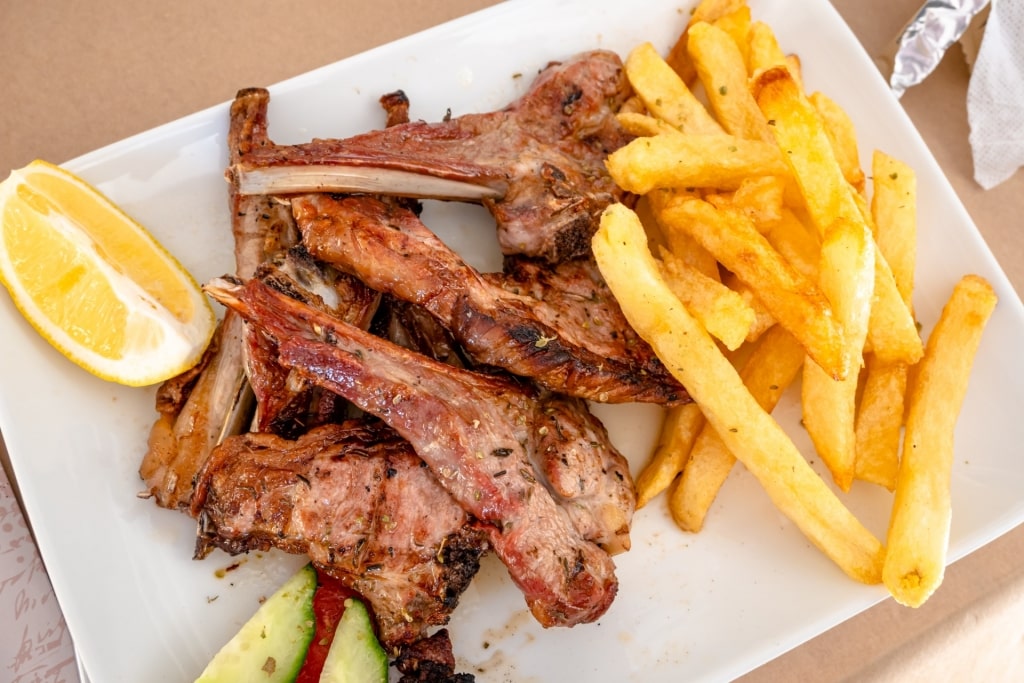
Lamb chops
Most of the meals that Greece is known for consist of a series of various meze (small plate dishes and salads) to share, followed by a meat course, at which point everyone looks at each other and wonders where they’re going to find the room to fit it all in.
In tavernas that still cook on open charcoal grills, the smart choice is lamb chops which, unlike elsewhere, are rough cut rather than perfectly shaped.
Cooked until the fat crisps, sprinkled with salt and oregano and with a liberal squeeze of fresh lemon, they are ordered by the kilogram (2.2 pounds) to share.
However, this is the pre-cooked weight and includes the bones too, so the actual meat is a lot less to stomach. Head to either Biftekoupoli (Meatball Town) in the suburb of Glyfada, or Vlachika in coastal Vari for the most authentic grill tavernas.
At the latter, staff often dress in traditional shepherd’s garb to try and attract more customers, whistling loudly to get them to come through the door. It’s a lovely little theater to add to a great meal.
Octopus
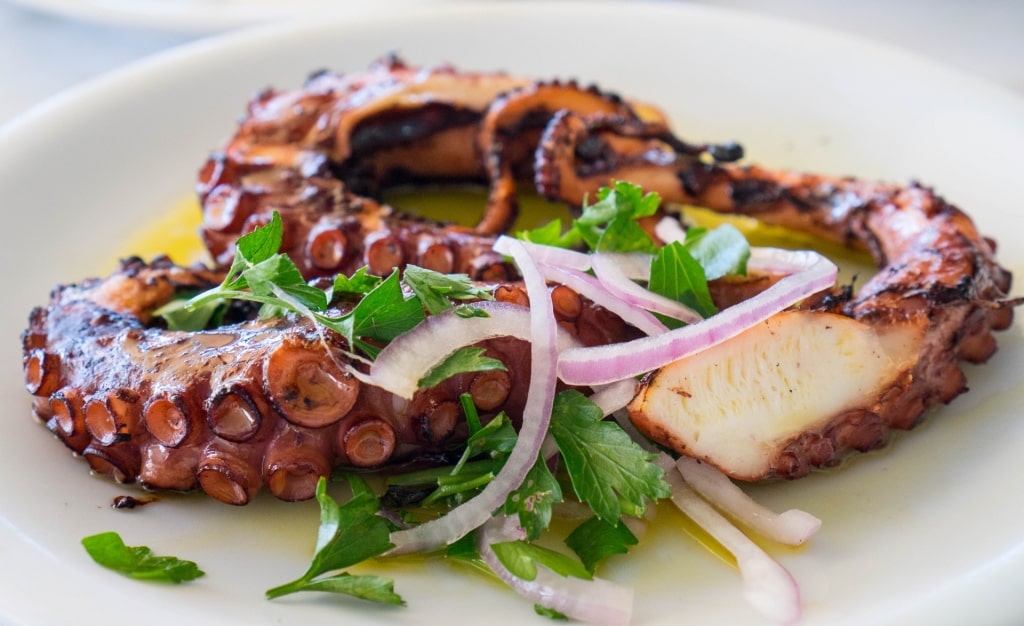
Octopus
There’s nothing more Greek and summer-like than a plate of char-grilled or boiled octopus accompanied by a glass of ouzo (Greece’s famed aniseed spirit) while gazing out to some of the best beaches in Athens, in the suburbs on the Athenian Riviera or the port of Piraeus.
Ordinarily, the latter is a huge, noisy, bustling hub of movement towards the islands, except for picturesque Mikrolimano. This tiny oasis of quiet is an almost perfectly shaped bay tucked away from the main port and lined with tavernas and restaurants—a perfect spot to try this iconic dish.
Greek Salad
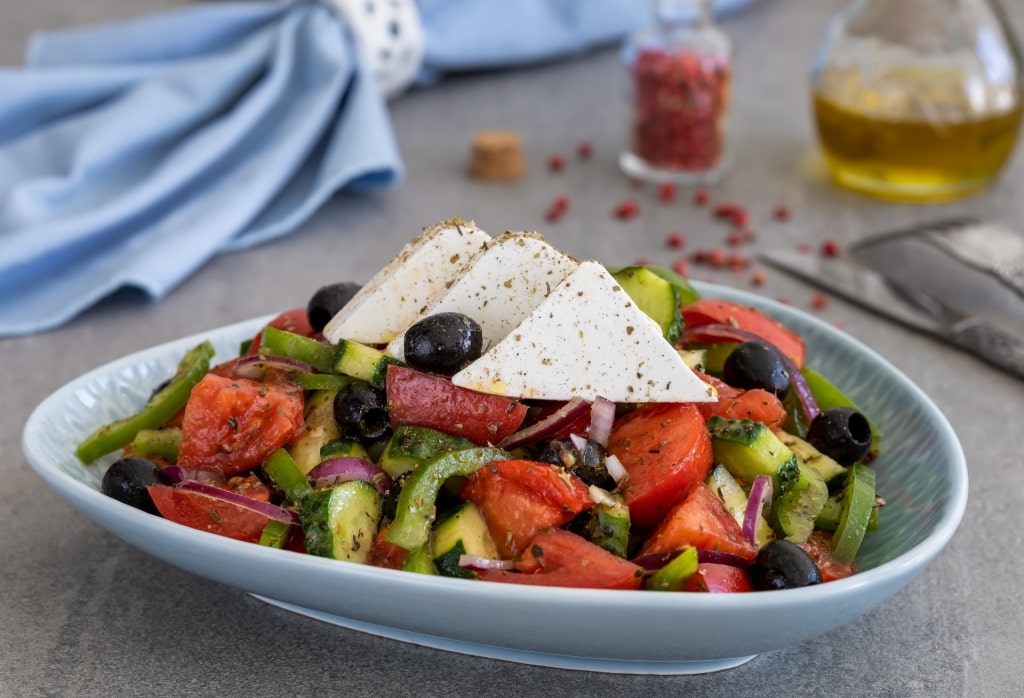
Greek salad
Ubiquitous with almost every meal here is xoriatiki (village) salad, now known simply as “Greek” salad.
Huge chunks of peeled cucumber and the juiciest tomatoes are accompanied by thinly sliced red onions, green peppers, deep black olives from Kalamata and topped with a slab of salty feta cheese sprinkled with oregano and doused with extra virgin olive oil and white wine vinegar.
You can eat this as a sharing plate as part of a larger meal, or make it a light lunch with chunks of home-baked crusty bread and a crisp glass of white wine.
Souvlaki
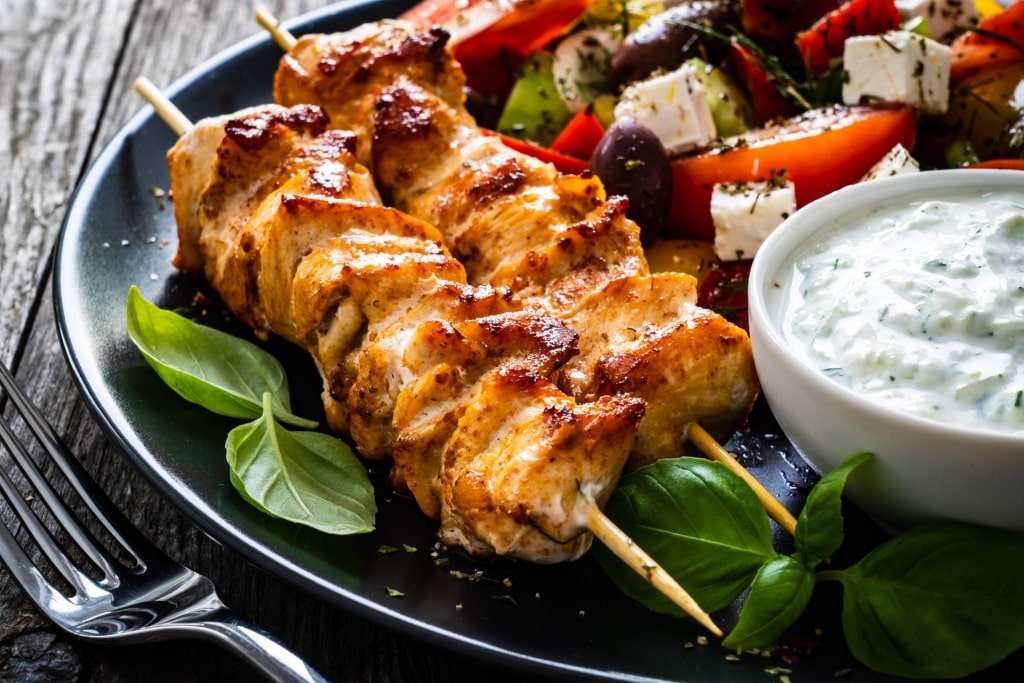
Souvlaki
Athens is one of the best food cities in Europe, and at times it can seem like every corner in the Greek capital has a souvlaki house serving the street food that has now gained international acclaim. Don’t, however, be fooled into thinking they are all the same—souvlaki comes in several different versions.
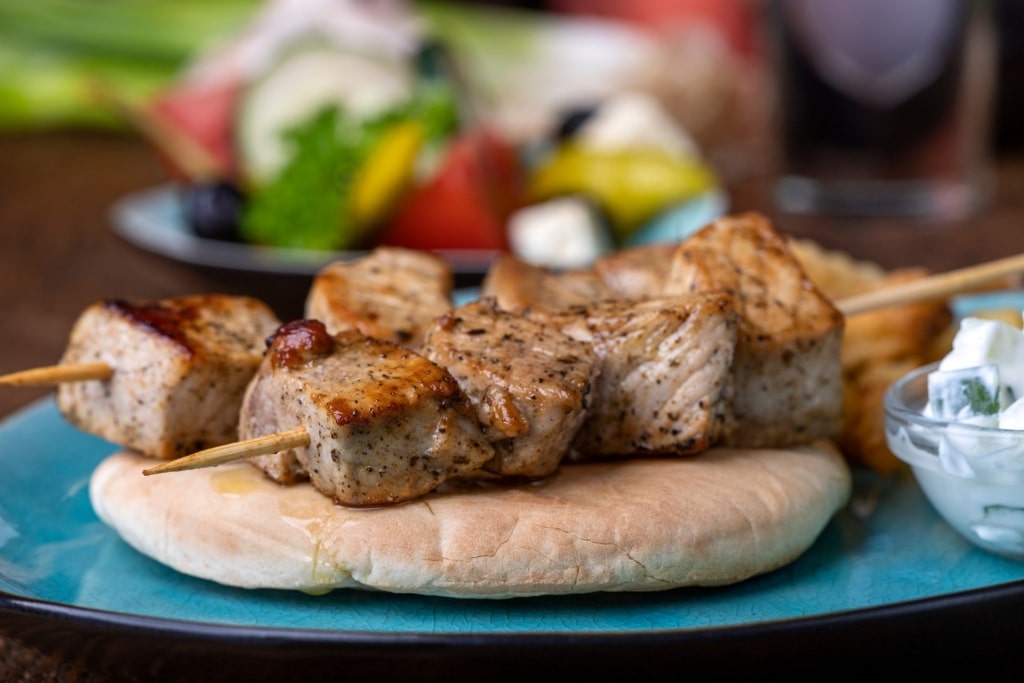
Kalamaki
Kalamaki are small cubes of pork, chicken or lamb grilled on bamboo skewers and eaten as is from the stick, or wrapped in soft pita bread with tomatoes, onions and tzatziki.
Bifteki is similar but made from ground beef or lamb wrapped on the skewer and again offered two ways.
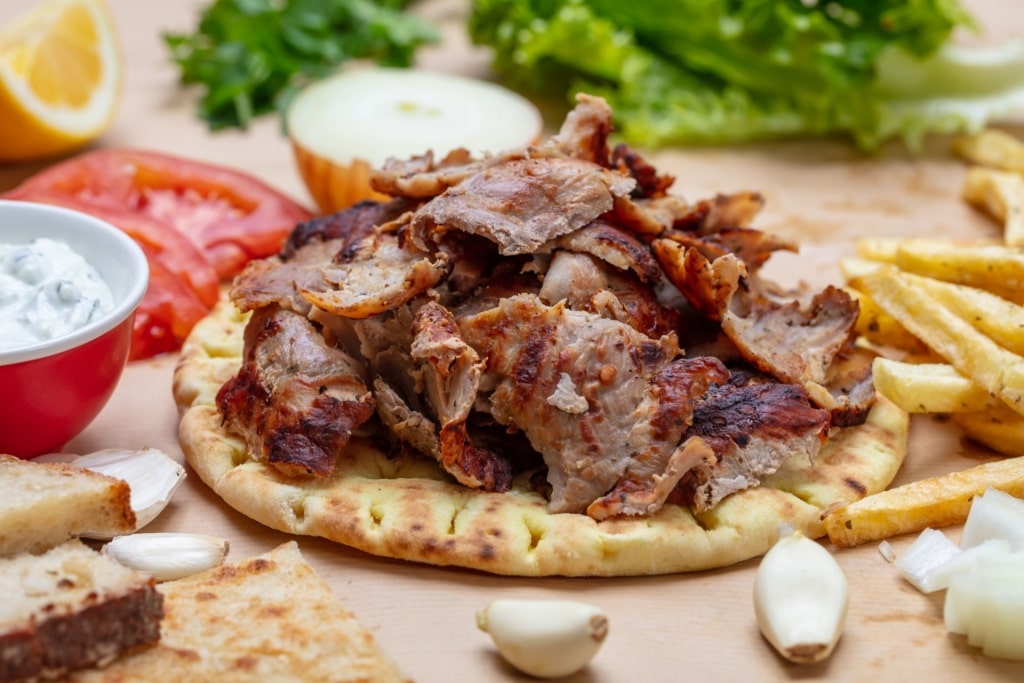
Gyros
Gyros, meanwhile, consists of slabs of meat—usually pork or chicken—on a large rotisserie spit with the meat hand carved as it crisps on the outside.
Read: Three Days in Athens
Tzatziki
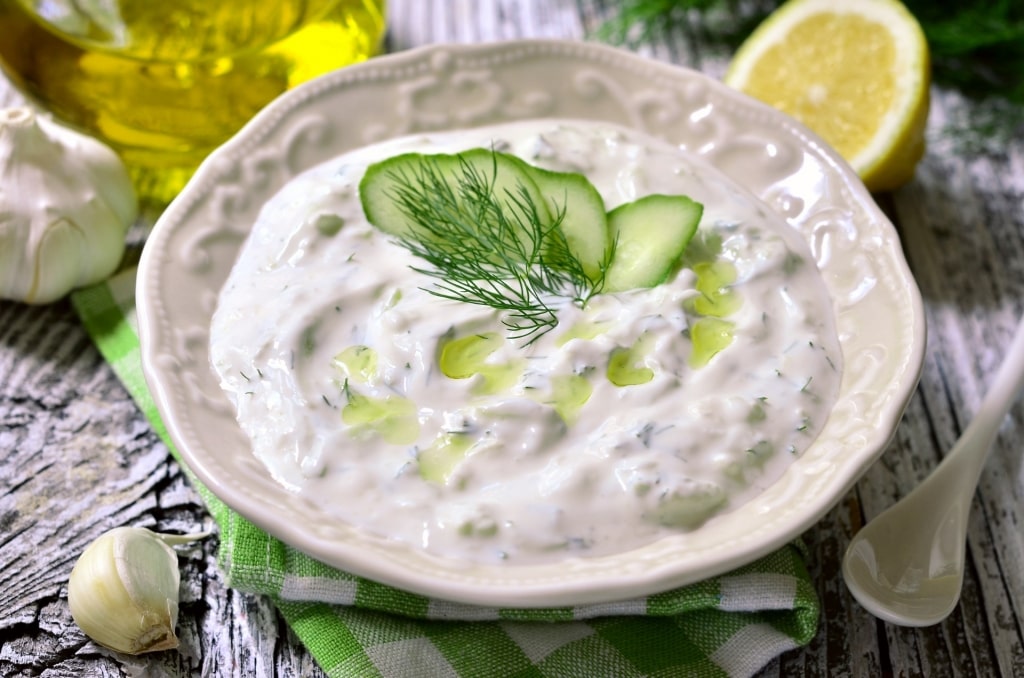
Tzatziki
Those looking for romance might want to get their souvlaki shop or taverna owner to hold the tzatziki. This fabulous dip in its simplest form has just three ingredients: thick Greek yogurt, grated cucumber and fresh garlic, usually lots of the latter.
Served as an accompaniment to most meals, it’s ideal for dunking crusty bread, French fries or fried zucchini as part of a series of meze starters.
Fried Zucchini
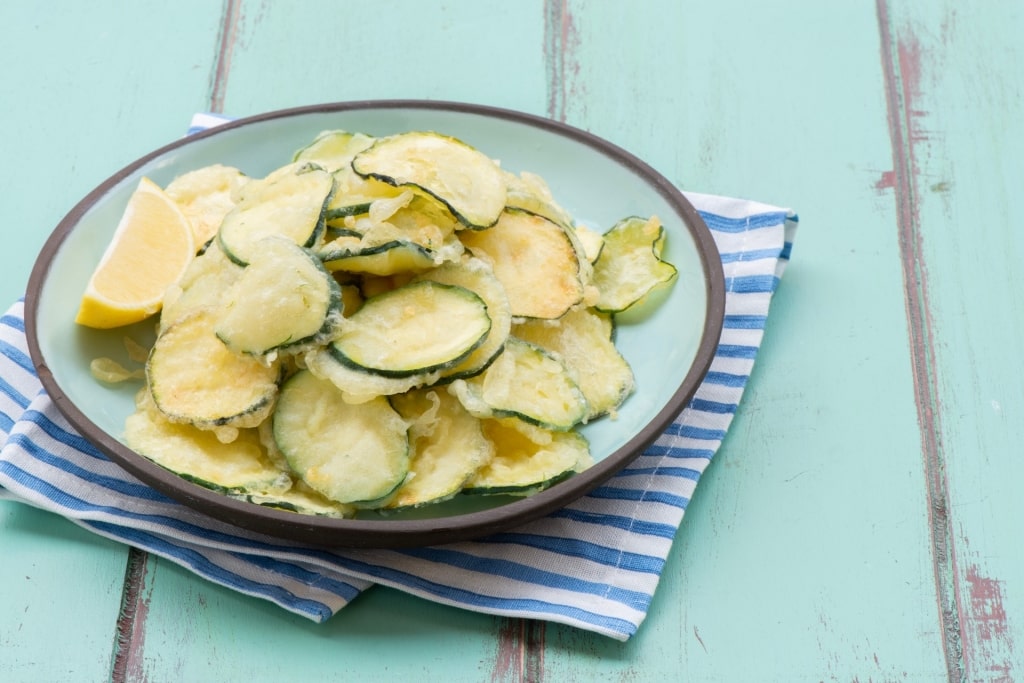
Fried zucchini
As a light alternative to French fries, fried zucchini (kolokythia tiganita) are a great choice. They tend to be served in two ways: one is quite thickly cut and dipped in a heavy batter before hitting the fryer, the other is thinly sliced, dipped in egg wash and flour and then lightly fried.
Horta
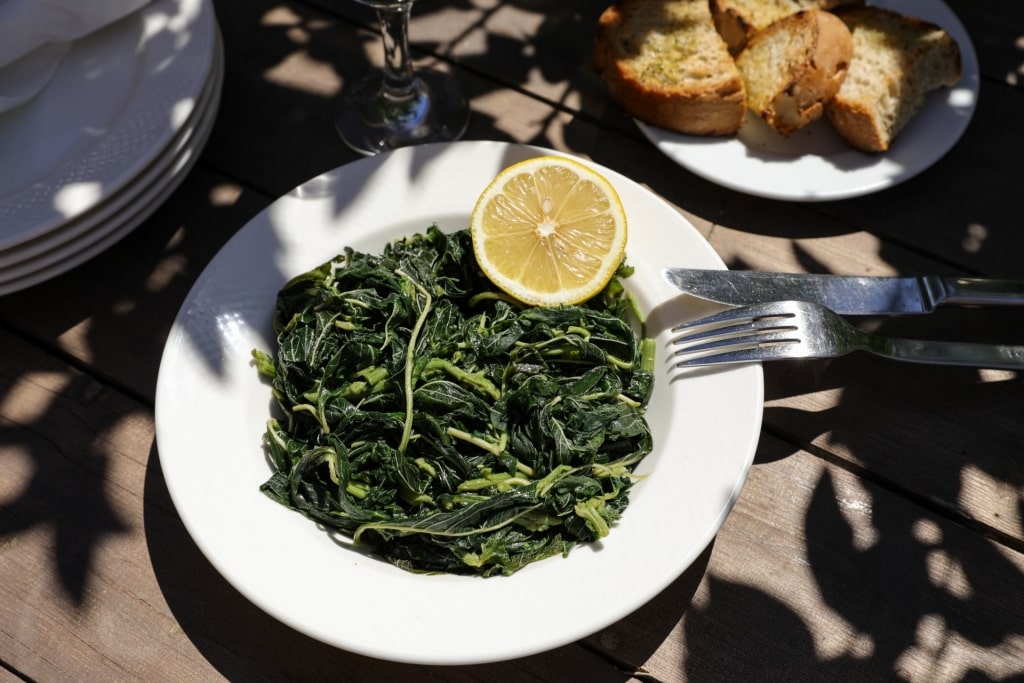
Horta
Good things often stem from the harshest circumstances: a good case in point is horta or wild greens which, despite being mentioned in ancient texts, became a true staple of the Greek diet in the mid-19th century as poverty spread immediately following independence from the Ottomans.
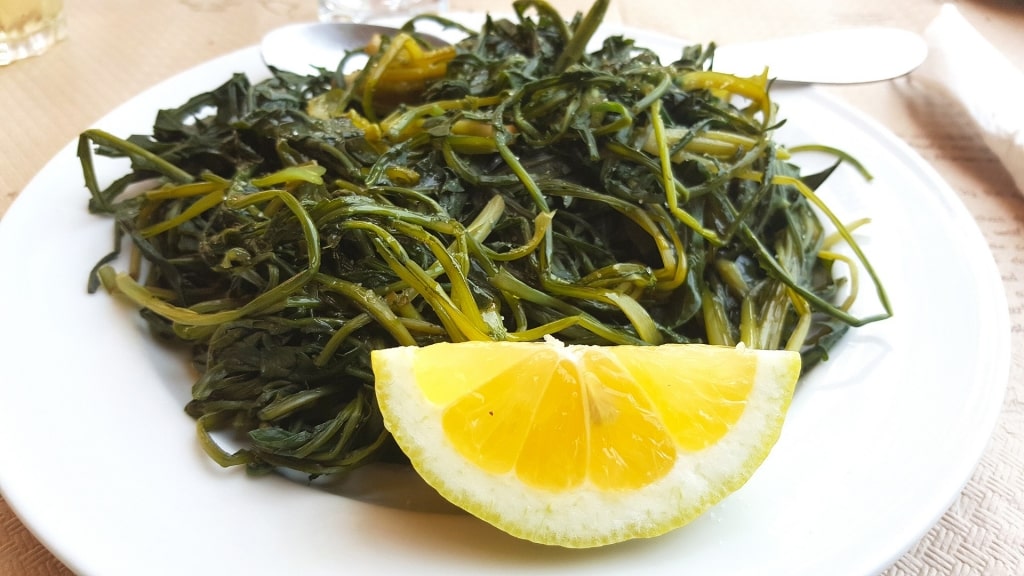
Horta
The type of horta will depend on what has been foraged (black-clad grandmothers filling their wicker baskets with leaves is a common sight in the countryside), but can include amaranth, Swiss chard, dandelion and sorrel, as well as wild spinach.
The bitterness of the raw leaves is dampened as the greens are quickly blanched in salty boiling water, before fresh lemon, extra virgin olive oil and a sprinkling of sea salt are added. In a world of gorgeous Greek cuisine, horta is probably the simplest, but one of the tastiest dishes.
Moussaka

Moussaka
Take Italian lasagna and replace the pasta sheets with thinly sliced eggplant and you’ll get moussaka—after a fashion. Moussaka is one of those dishes where the quality can vary, so it pays to be discerning when ordering.
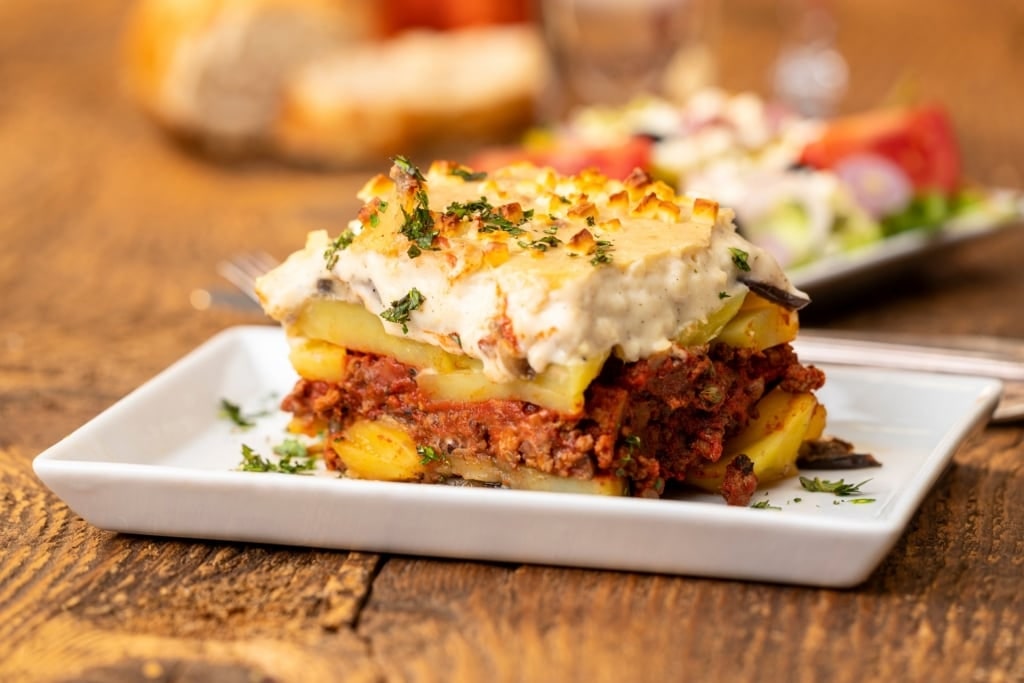
Moussaka
Three things help a good moussaka stand out: the use of lamb over beef as the meat, the addition of eastern spices such as nutmeg to the creamy bechamel sauce that covers the dish; and, perhaps most importantly, it needs to stand for a day or so before cutting and eating.
Moussaka always tastes better on day two after cooking when the flavors have really had the chance to come together.
Patsa
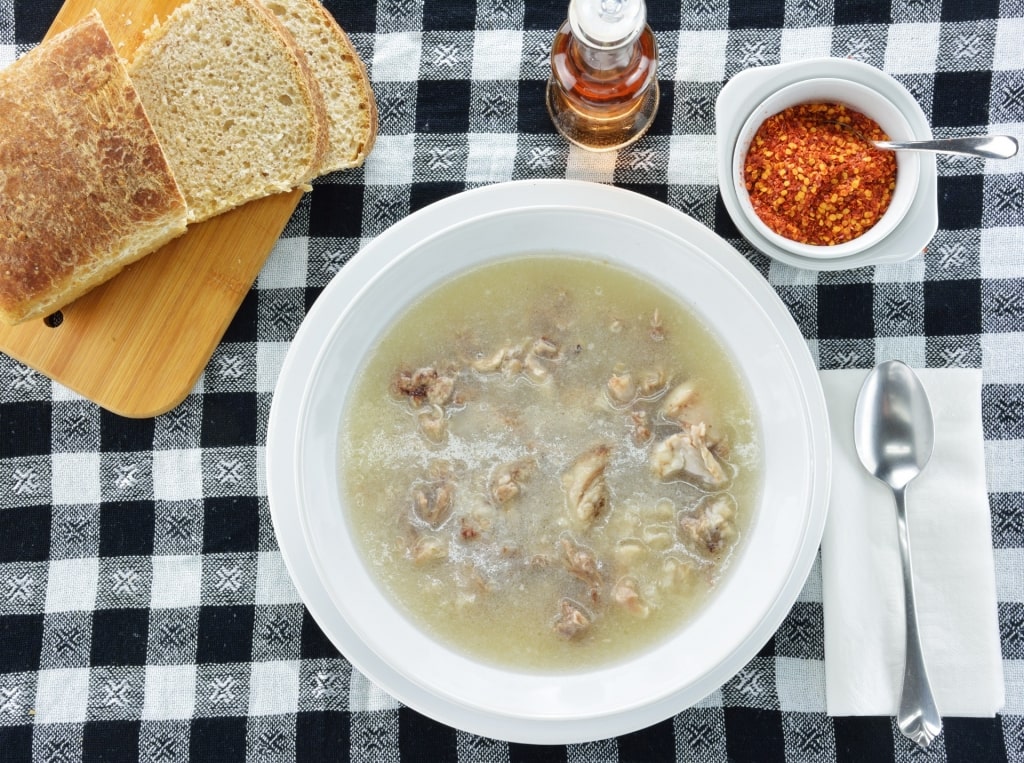
Patsa
As a spot with some of the best shopping in Athens, the Central Market is an absolute joy to explore.
Open from the early hours, it’s a sensory overload of calling traders selling fresh fruit and vegetables from surrounding farms, huge sacks of spices, beans and lentils, and fresh seafood. At its heart is the meat market where there are a couple of rustic tavernas tucked away among the sides of beef and whole lambs.
Originally set up to feed the traders, they naturally have the best produce. The specialty here is patsa, a hearty soup made from tripe (belly lining) and onions.
While that may sound off-putting to some, it’s surprisingly tasty and has the added benefit of being seen as a traditional Greek hangover cure, meaning the restaurants really come to life when the bars and clubs begin to close.
Saganaki
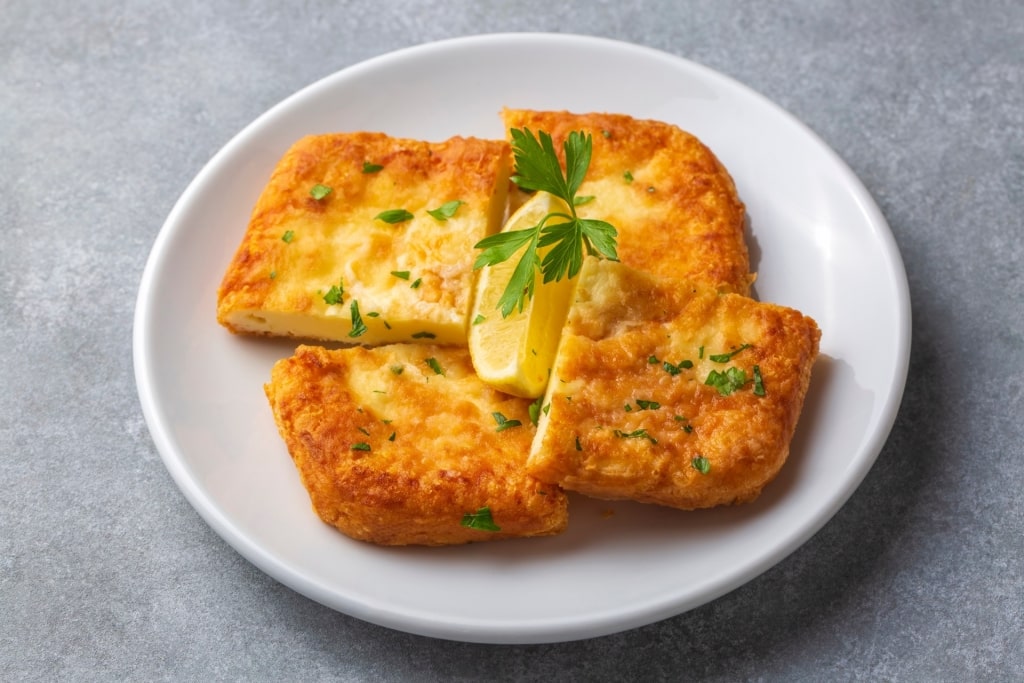
Saganaki
A sagani is actually a heavy bottomed, two-handled frying pan or skillet and technically, anything cooked in one is called saganaki. Over the years though, when saganaki is on the menu it refers to fried cheese, unless a differentiator such as “shrimp” is used to describe a dish.
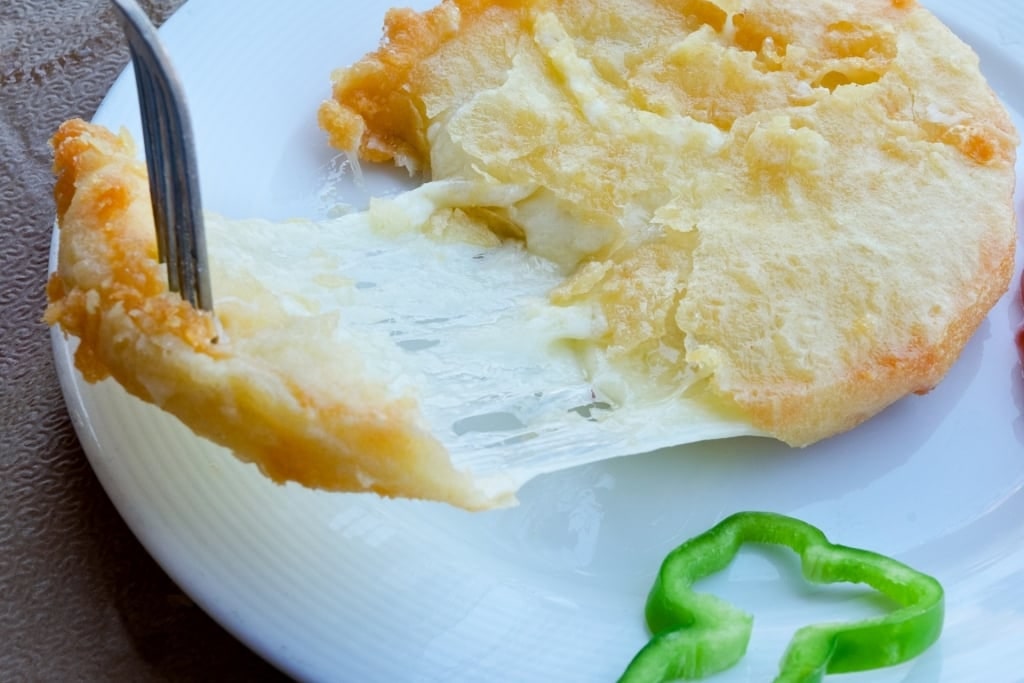
Saganaki
There are three main types of cheese used: graviera, kefalograviera and kefalotyri. All are pale straw in color, medium to hard in texture and have a slightly nutty flavor.
The cheese is flash fried on either side so it has time to soften but not melt and served to be eaten immediately with a squeeze of lemon juice to reduce the oiliness of the dish.
Tyropita
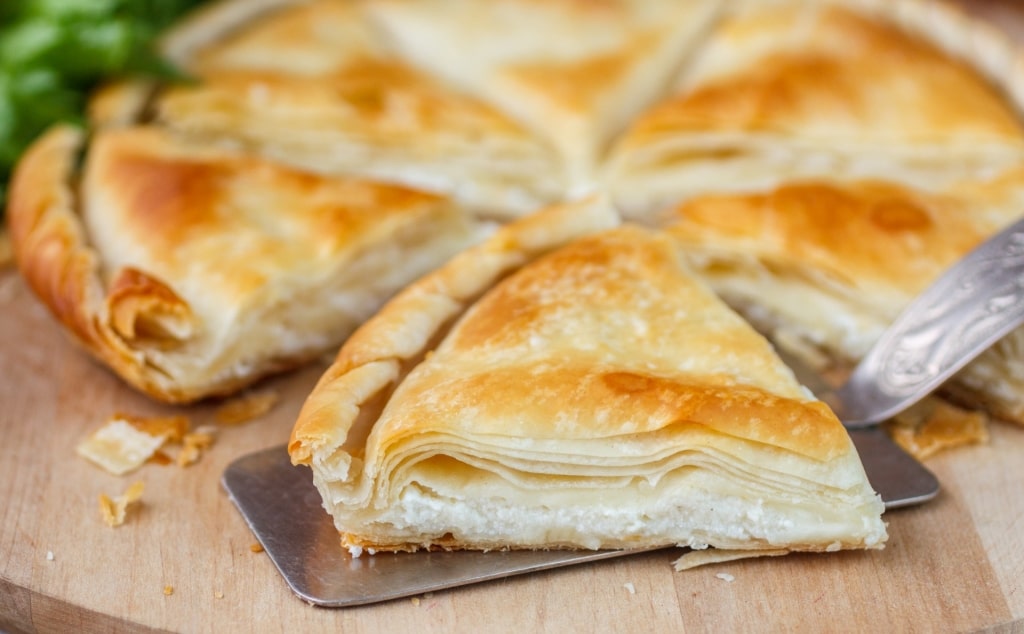
Tyropita
Another favored street food in Athens with a whole host of variations is tyropita, or cheese pie. Traditionally made with layers of buttered filo pastry and filled with a mixture of egg and cheese, it can be made as a larger pie that is then portioned or in individual shapes.
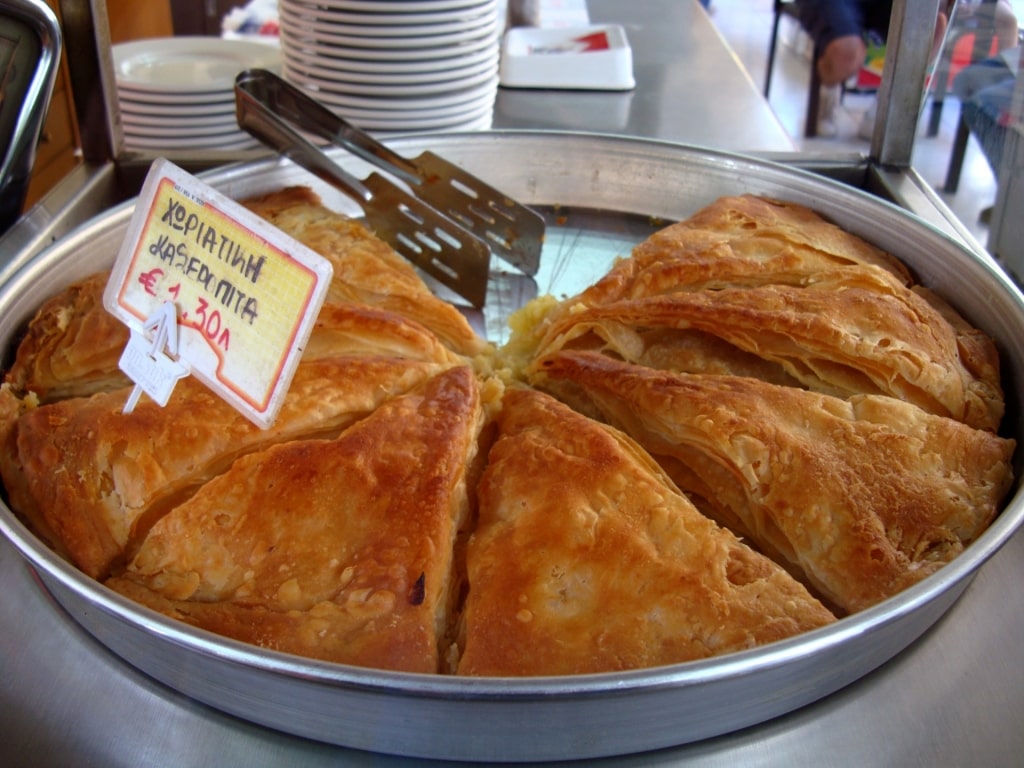
Kaseropita
Tyropita kourou—traditionally a Thessaloniki variation—eschews the filo for a more pie-dough/short-crust pastry in which to wrap all the goodness, while kaseropita uses a yellow cheese called kasseri that has more in common with a cheddar or a gouda than it does feta.

Spanakotyropita
Other common variations include spanakotyropita (spinach and cheese) and zambonotyropita (ham and cheese). Almost every neighborhood bakery does its own homemade version of cheese pies.
Another good place to try the full range of savory options and find a favorite is at the Everest fast food chain of cafés that are dotted around the city.
Koulouri
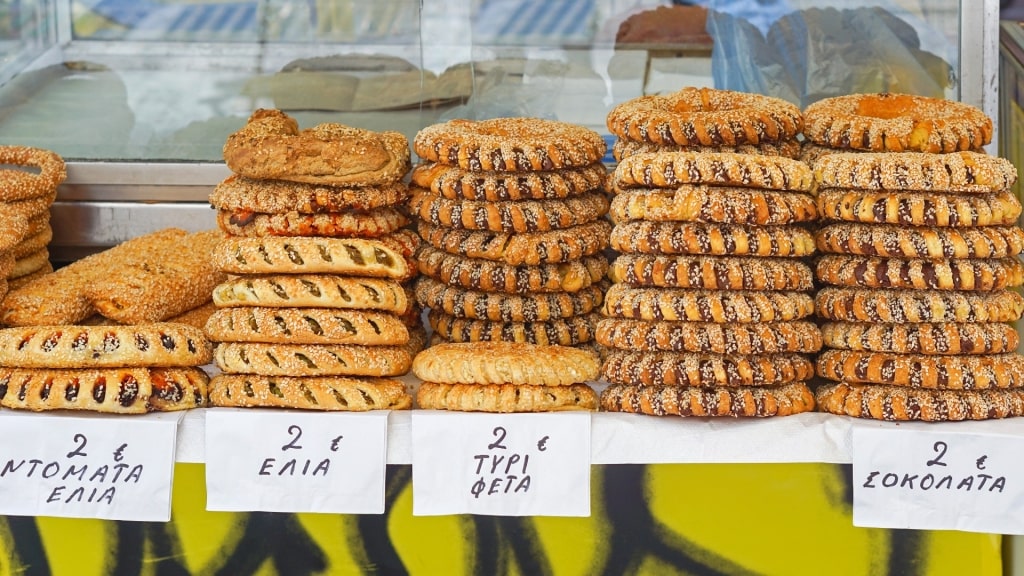
Koulouri
Lining the streets of downtown as people head in to work, almost every corner will be home to a small cart selling koulouria (singular koulouri)—sesame seed-sprinkled bread rings not entirely unlike a soft pretzel found on the streets of New York.
Koulouria can be simple rings or braided and can come with or without sesame seeds, while some may have savory or sweet fillings. This is a typical Greek breakfast on the go, usually served with thick Greek coffee or ice-cold frappe and always slightly warm and delicious.
Greek Yogurt with Honey

Greek yogurt with honey
How does Greek yogurt differ from traditional types? It’s strained to take the whey out, resulting in a thicker, creamier offering that is said to be super-high in protein and packed with good gut bacteria, as well as being a breakfast staple for many Athenians.
It can be served with fresh or stewed fruit and sprinkled with nuts, but the absolutely simplest and best version is with local Greek honey.
Interestingly, Greece is said to have proportionally more beehives than any other country in Europe and, given the warm weather and variety of flora on offer, honey here can have deep flavors.
Look out for variations from wild thyme, pine and fir trees—the intense smoky nature goes particularly well with the creamy yogurt.
Tyrokafteri
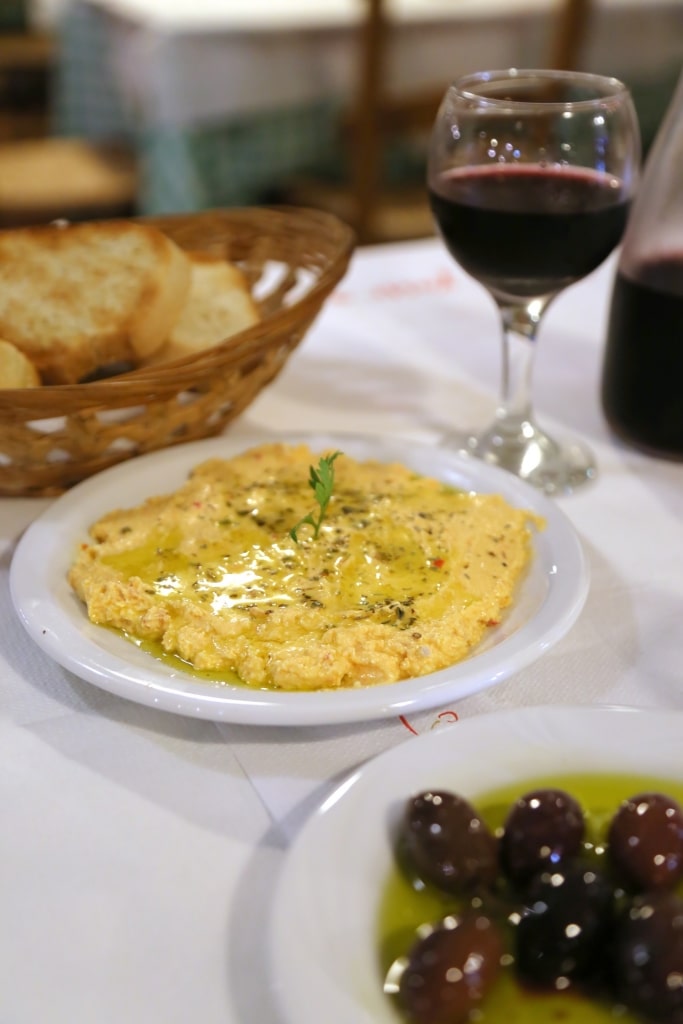
Tyrokafteri
Another fabulous dip to add to a meze offering is tyrokafteri, or fiery cheese to give it a literal translation. Also seen on menus as ktypiti or kopanisti, it consists of feta cheese whipped with char-grilled red peppers with varying degrees of heat depending on the chef’s preference.
Milder versions will use the distinctive red peppers from Florina in northern Greece, with spicier versions adding either chili peppers or dried chili flakes.
Stuffed Tomatoes & Bell Peppers
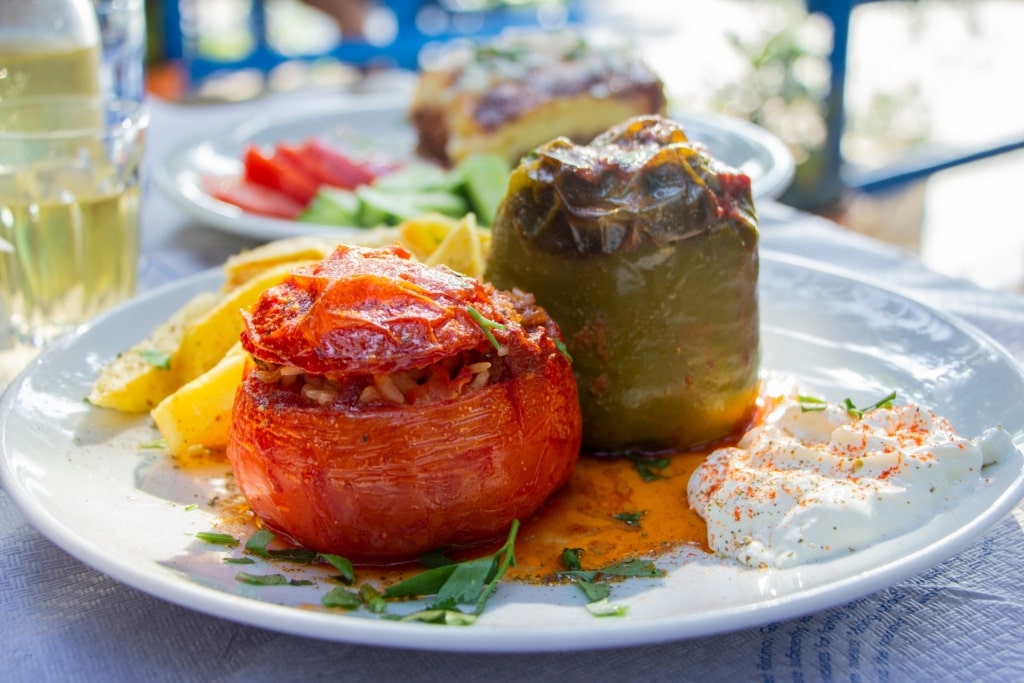
Stuffed tomatoes and bell peppers
One-pot tray bakes are popular all over Greece and will be seen on menus under the title mageirefta which literally means “cooked”. A looser translation is “home-cooked”, used to differentiate such dishes from ones that are grilled.
Alongside moussaka, at the top of the mageirefta tree are stuffed tomatoes and bell peppers.
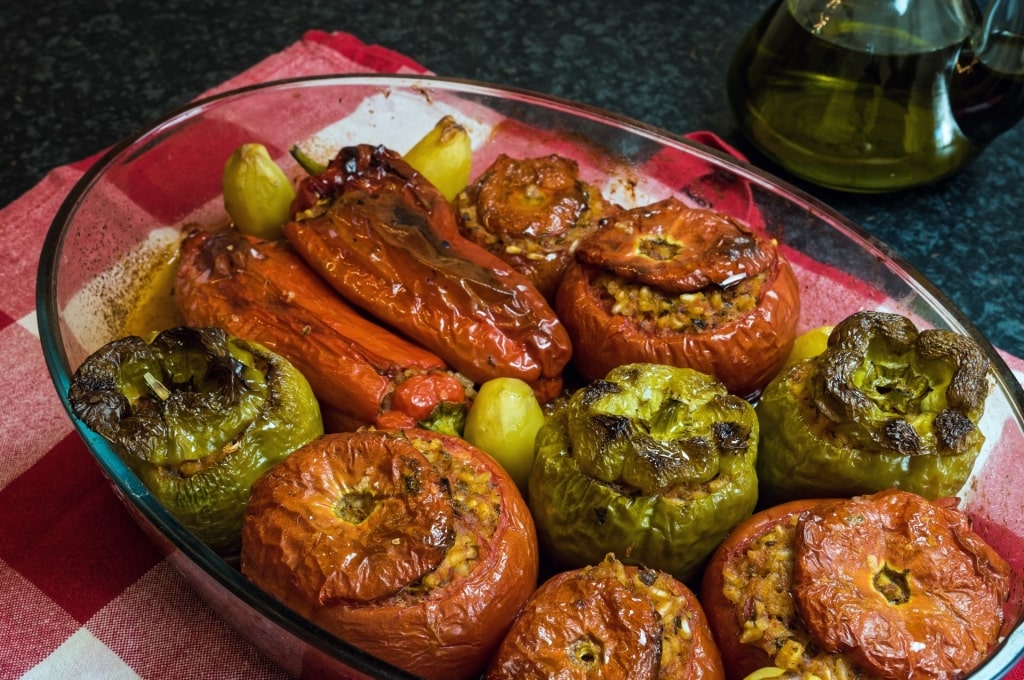
Stuffed tomatoes and bell peppers
Huge tomatoes and the greenest of bell peppers are topped and their flesh scooped out to be replaced by a mixture of rice, fried onions and, occasionally, raisins. (Vegetarians beware, as some restaurants may also add ground beef).
These are then slow-cooked in an oven with potatoes, extra virgin olive oil and lemon wedges. Like moussaka, these are also much better on day two when the flavors have infused.
Fistikia/Pasatempo
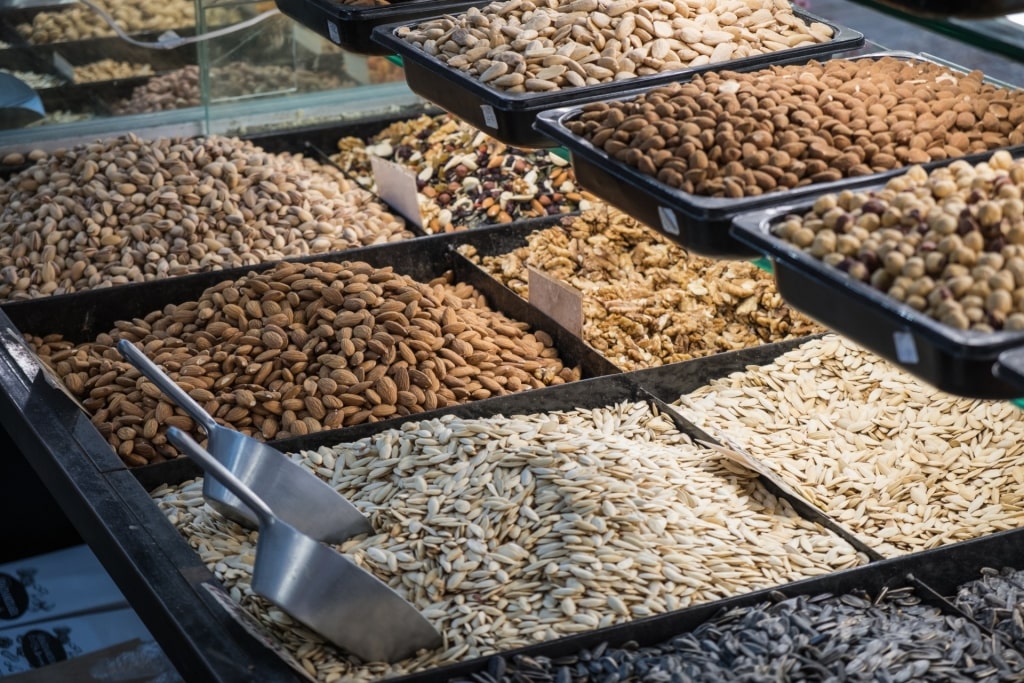
Fistikia
Sitting in a café or bar in Athens, you could hear street hawkers offer up a call that sounds like “stigia”. These are actually fistikia sellers, offering pistachios.
These protein-packed nuts grow in abundance on Aegina, the nearest island to Athens, where they are dry roasted in salt with or without their hard shell left on.
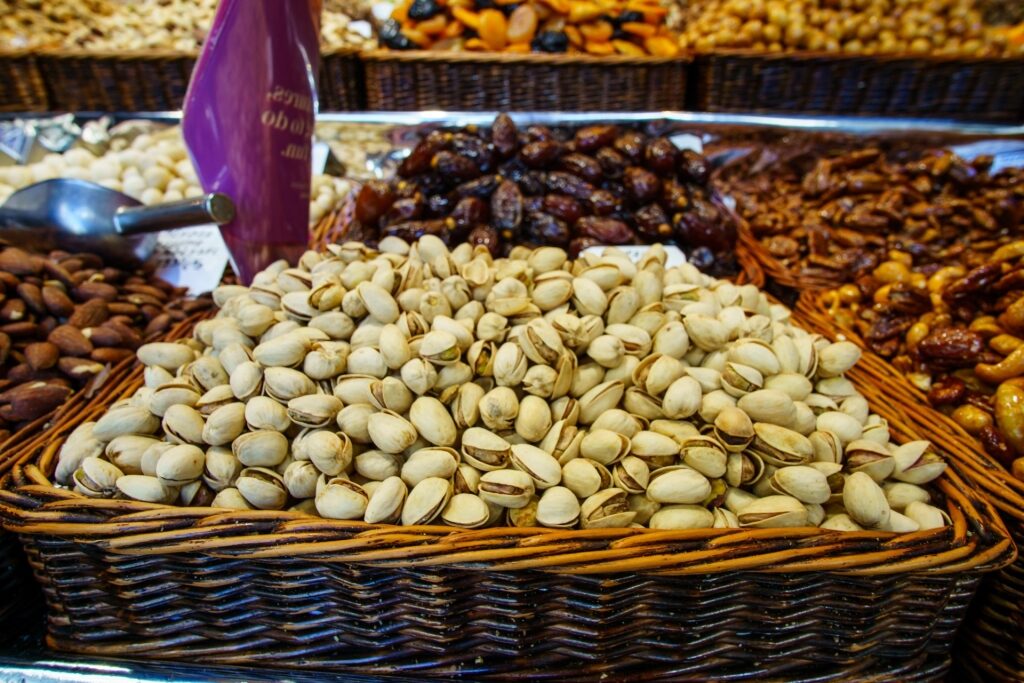
Pasatempo
Sellers may also offer pasatempo or pumpkin seeds, again roasted in salt. Pasatempo is actually a Hellenized version of the Italian for “passing time”, and many Greeks will literally do just that—while away the hours, sipping on an ice-cold beer watching the world go by, and nibbling on nuts as a growing mountain of spent shells gathers around their feet.
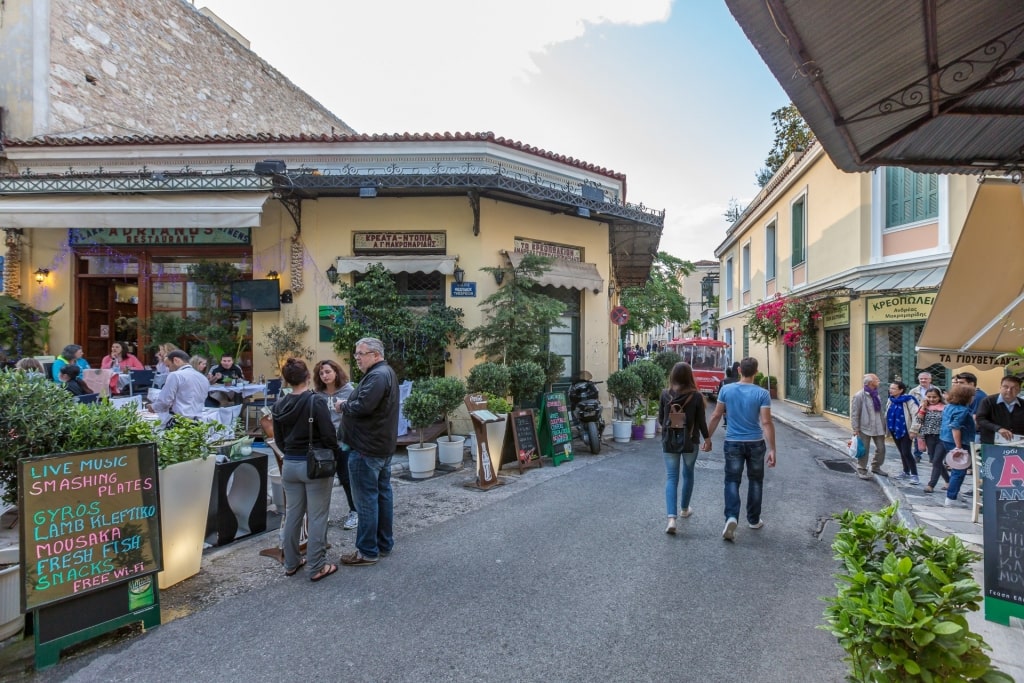
Plaka
Taste your way around Athens on a culinary-packed cruise to Greece. Browse Athens cruises and start planning your next foodie vacation today.
